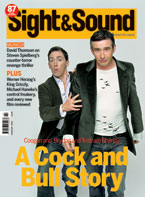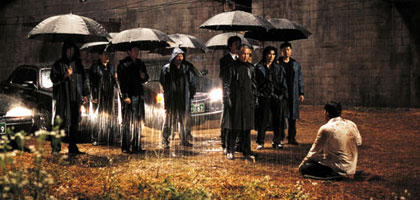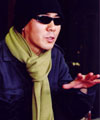Primary navigation



James Bell: Your films bring your own distinctive style to different genres.
Kim Jee-woon: Choosing a genre is like choosing a theme: for instance, noirs deal with destruction, horror or thrillers with intrigue, comedies with the aesthetics of absurdity, sci-fi with our hopes and fears for the future, melodramas with emotional excitement and pain. And the most effective way to tell a given story is often to use certain narrative conventions. There's also an ease to film-making when you've mastered a genre that reduces the risk of failure. And lastly there's a commercial imperative: since the horror genre, for instance, has its own box-office appeal I spend my budget on upgrading the production values rather than on casting a star to draw an audience.
'A Bittersweet Life' has been linked with other recent films as evidence of an action/thriller genre in Korean cinema.
A Bittersweet Life falls between film noir and gangster cinema. I've said that it's influenced by Jean-Pierre Melville, whose films I watched as a child. I was drawn to the more philosophical and aesthetic action thrillers and I made A Bittersweet Life from the desire to talk about the darkness and cold-heartedness of life as well as to capture the pleasure of action. In Korea most films about violence focus either on becoming box-office hits or on communicating to critics. Park Chan-wook's vengeance trilogy is an example of an auteur courting both, as is Bong Joon-ho's Memories of Murder.
Do you see comparisons between your work and Park Chan-wook's?
When you look at the kind of story A Bittersweet Life is trying to tell then you see it has a totally different intention from the 'Vengeance' films. For a start, Old Boy is a universal tale while A Bittersweet Life deals with an extremely personal story. A Tale of Two Sisters, The Foul King and The Quiet Family all belong to another world from the films of Park Chan-wook but we're put in the same category because we both demonstrate our own directorial style - in our use of music and sense of beauty - while appealing to the general public. We like similar movies but he's more enthused by masculine films whereas I like delicate, feminine films such as Agnès Varda's Happiness, Peter Jackson's Heavenly Creatures and Victor Erice's The Spirit of the Beehive. I should ask Park Chan-wook if he likes these films too.
'A Bittersweet Life' suggests that Sun-woo only discovers who he really is once the surface trappings of his existence (the sharp suits, flash apartment, respect from his boss) are taken away.
The hotel setting is a place where splendour (the sky lounge and lobby) and the dark side (the nightclub and staff corridors) co-exist and as such it epitomises the idea of living at the borderline between brightness and darkness: the character's state of mind is reflected in the spaces. The luxurious sky lounge could represent Sun-woo's bad faith, and he realises his true nature only when he has nothing left - when he's dying. And I wanted to show a man reminiscing about the sweetest moment in his life as he dies.
There are many very stylish, very violent scenes, such as the one where Sun-woo fights off several people to make his escape. Do you have a clear idea of the look of these scenes before filming starts?
Before the shoot I designed the action scenes with martial-arts director Jung Doo-hong, and Lee Byung-hun (who plays Sun-woo) did many rehearsals with the martial-arts actors, which I filmed on camcorders. Then when we found our location we refined the scene with the participation of the special-effects person, the CG person and the car-stunt people. The scene took five or six days to shoot: I had to have everything from the rainwater to the lighting working to my own satisfaction so I repeated the takes until I got it right. Thanks to so much preparation I think we were able to capture many good pictures.